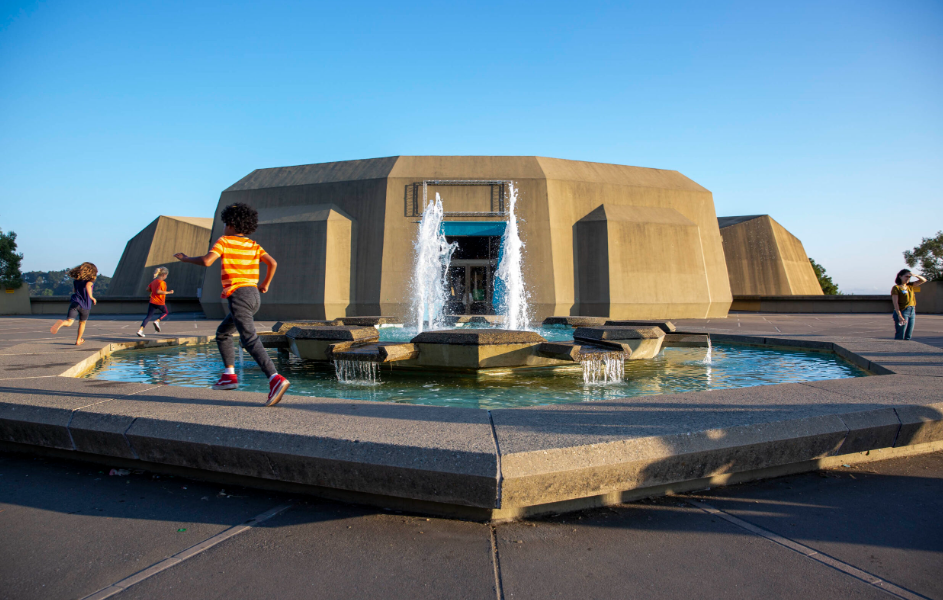Often touted as the crown jewel of scientific learning in Berkeley, Lawrence Hall of Science stands tall and proud. Nestled on the verdant slopes of the Berkeley Hills, this educational institution has been a beacon of knowledge for over half a century.
Named after Ernest Orlando Lawrence – a Nobel laureate and the inventor of cyclotron – it serves as a testament to his vision for science education and public engagement.
Over the years, Lawrence Hall of Science has made significant strides in bridging gaps in scientific understanding. Not only does it offer immersive experiences that make science accessible to all ages, but it also nurtures budding scientists through its enriching programs.
Its contributions have resonated beyond its physical walls with enduring impacts on local communities and global scientific discourse. This legacy is not just about commemorating an individual’s contribution; instead, it reflects a collective effort towards fostering a culture that cherishes curiosity, exploration, and discovery.
Ernest O. Lawrence: The Man and his Mission
Ernest O. Lawrence, a Nobel laureate and visionary physicist, played an exceptional role in shaping the scientific landscape of the 20th century, leaving behind a profound legacy that continues to inspire future generations at Lawrence Hall of Science.
Born in South Dakota in 1901, he showed an early interest in science, later earning his Ph.D. from Yale University and eventually joining the faculty of the University of California Berkeley in 1928. It was here that Lawrence embarked upon groundbreaking research that would redefine nuclear physics. His crowning achievement was the invention of the cyclotron – a device used to accelerate particles to high speeds – which not only earned him international acclaim and the Nobel Prize for Physics but also laid the foundation for advancements in medicine, industry and atomic energy.
Lawrence’s unwavering commitment to expanding scientific knowledge led to his vision for an interactive science education center – what is now known as Lawrence Hall of Science (LHS). Established posthumously following his death in 1958, LHS was designed with one aim: To ignite curiosity about our world through science learning experiences that are innovative and engaging.
The hall serves as both a monument to this great scientist’s achievements and as a beacon drawing together those who wish to explore their own potential within STEM fields. With its many exhibits inspired by Lawrence’s work–from particle accelerators to hands-on engineering challenges–LHS has become an integral part of Berkeley’s rich educational landscape, fostering an atmosphere where dreams are nurtured and discoveries made possible by shared intellectual pursuit.
Impact and Contributions of the Institution over the Years
Throughout the years, this esteemed institution has made significant strides in scientific education and research, contributing profoundly to the broader field of knowledge. From igniting a passion for science in young minds through its innovative educational programs to spearheading groundbreaking research initiatives, Lawrence Hall of Science (LHS) in Berkeley has left an indelible mark on society. Its contributions extend beyond the realms of academia and research, playing a pivotal role in shaping public understanding and appreciation of science.
The impact of LHS can be illustrated by highlighting four key areas:
1. Educational Programs: LHS is renowned for its science-centric educational programs that cater to students from diverse backgrounds and age groups. These include school-year programs, summer camps, after-school activities, and more.
2. Research Initiatives: The institution has been at the forefront of numerous scientific research projects over the years, propelling advancements across various fields such as astronomy, biology, physics, and chemistry.
3. Public Exhibits: Through its interactive exhibits designed to make science accessible to all ages, LHS has played a crucial role in demystifying complex scientific concepts for the general public.
4. Community Outreach: With a strong commitment to making science inclusive for all communities regardless of socio-economic status or background, LHS continues to reach out through engaging workshops and events organized in underserved communities.
Each initiative undertaken by LHS echoes Ernest O. Lawrence’s vision – promoting scientific literacy while ensuring inclusivity and diversity within the realm of science education and exploration. Thus, it stands as a beacon fostering curiosity-driven learning whilst cultivating an inclusive community bonded by shared interests in unraveling mysteries that lie beyond ordinary perception; weaving together strands that form part of an intricate tapestry called ‘Science’.
Tips for Visiting Indian Rock Park: What You Need to Know Before You Go
Exploring the Rich History and Significance of the Greek Theatre in Berkeley


